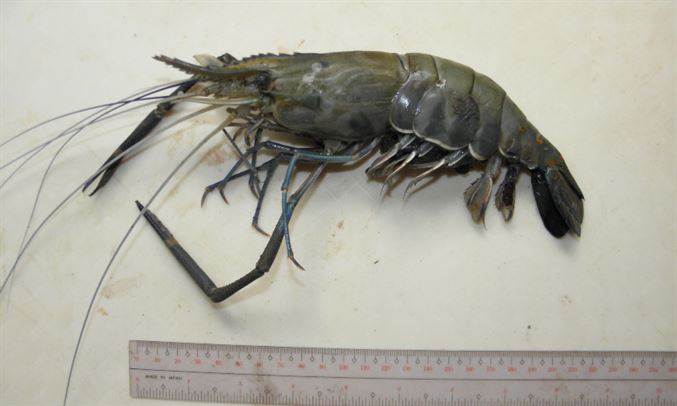Macrobrachium rosenbergii, the largest species within its genus, exhibits sexual dimorphism in size, with males reaching a maximum size of 33 cm and females of 29 cm. Their body consists of a cephalothorax with five head segments and eight thoracic segments, while the abdomen comprises six segmented movable terga. Each abdominal segment has a pair of biramous pleopods, or swimming legs. Their eyes are compound, and the cephalothorax possesses two pairs of antennae, three pairs of jaws, three pairs of maxillipeds, and five pairs of walking legs. The dorsal surface of the abdominal carapace is smooth and rounded. The prawns have a slender, upwardly curved rostrum with 11-14 dorsal teeth and 8-10 ventral teeth. Mature males are notably larger than females, with enlarged second chelipeds and a larger head, as well as a narrower abdomen. Both left and right chelipeds are equal in size in M. rosenbergii, distinguishing it from other Macrobrachium species.
Males have long chelipeds that extend beyond the rostrum’s tip, and their genital pores are located at the base of the fifth walking leg, while females have theirs at the base of the third walking legs. M. rosenbergii is a nocturnal, bottom-dwelling, territorial species that tends to stay partially buried in sediments during the day, favoring shallow, detritus-rich, and vegetated habitats.
The spawning season varies with geographic location and ranges from summer in temperate regions to the onset of the rainy season in tropical areas. The prawns may spawn multiple times per season. Successful mating occurs between soft-shelled females and hard-shelled males. Gravid females migrate downstream to estuaries, where their eggs hatch into free-swimming larvae. These larvae progress through 11 zoeal stages before reaching the post-larval stage.
